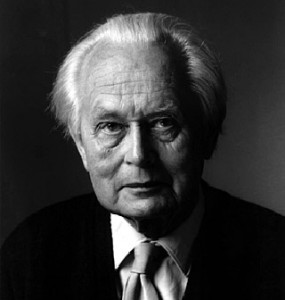 Perhaps best known for being a scientist and inventor of some repute, Piet Hein was also a poet who often wrote under the name Kumbel. Born in Copenhagen in 1905, he composed a number of short poems or grooks that were published in the local newspaper Politiken particularly during the war when a large part of Denmark was occupied by the Germans.
Perhaps best known for being a scientist and inventor of some repute, Piet Hein was also a poet who often wrote under the name Kumbel. Born in Copenhagen in 1905, he composed a number of short poems or grooks that were published in the local newspaper Politiken particularly during the war when a large part of Denmark was occupied by the Germans.
Hein could be seen as a war poet as, during the occupation, it was one of the few weapons that he possessed. He had been well educated, the direct descendent of a Danish naval hero. In his teens he studied at Copenhagen University where he obtained a degree in Theoretical Physics before going on to the Technical University of Denmark. Whilst studying quantum physics Hein invented the Soma Cube, a solid dissection puzzle that later became a popular game during the 1970s.
Throughout his life, it was difficult to pigeonhole Hein in a particular profession. He studied engineering at the Technical University and worked on inventions and he wrote a number of philosophical works. His poetry stems mostly from the period when the Nazis invaded and occupied Denmark, when Hein, rather than flee the country like some of his compatriots, chose to become part of the resistance.
After having been the president of the Anti-Nazi League, Hein began getting his poems published, which were often greatly appreciated by his fellow Danes. This epigrams called grooks were more often than not accompanied by his own drawings and provided encouragement to the Danes with their double meaning.

It has been estimated that Hein wrote in excess of 10,000 grooks during his lifetime, but the most powerful were written during this time of war and occupation. The short poems were often found as graffiti across the city of Copenhagen and spoke of not betraying your country by collaborating with the Germans. These grooks were published more formally in the late 60s and 70s when there was a resurgence of interest in the resistance in Denmark during the war and Hein’s work.
Following the liberation of the country, Hein continued to innovate and undertake other challenges, inventing new games and contributing greatly to Danish design over the 50s and 60s. He was also responsible for trying to bridge the gap between hard science and the softer, more open humanist approach to life.
Hein continued to write his Grooks, producing them in several languages which he had learned so that he could reach a wider audience. In the aftermath of the war, Scandinavian architects asked Hein to find a solution for a new way of building that led to him creating the super-ellipse which he later brought to the design of furniture.

Hein continued to innovate throughout the rest of his life and was awarded an honorary doctorate by Yale in 1972. He married 4 times, the first in 1937 which ended in divorce and the last in 1955 which ended when his wife, Gerd Ericsson, died in 1969. Hein himself lived to the ripe old age of 90 and passed away in 1996 in his home at Funen in Denmark.

